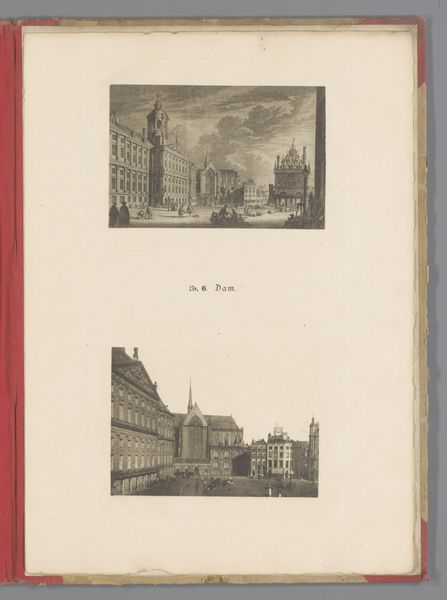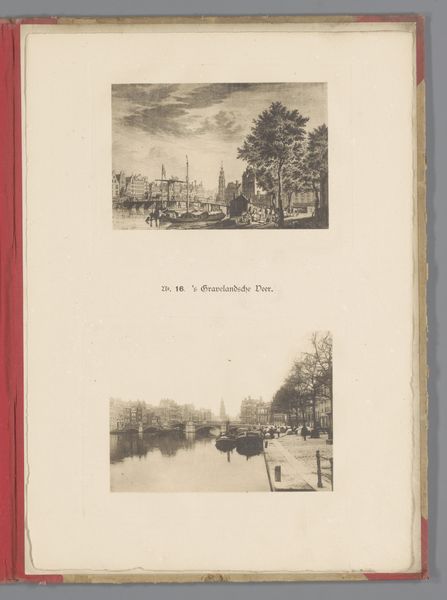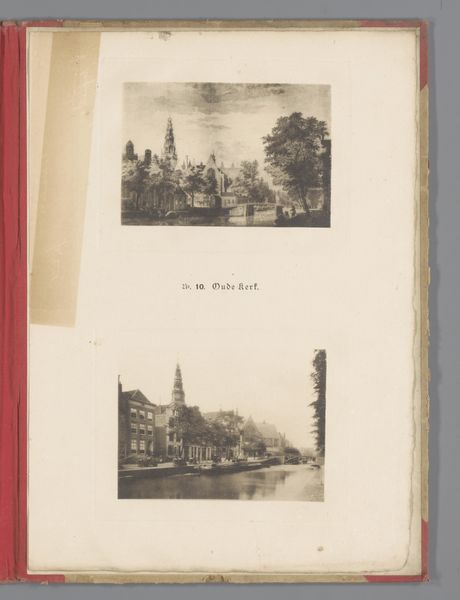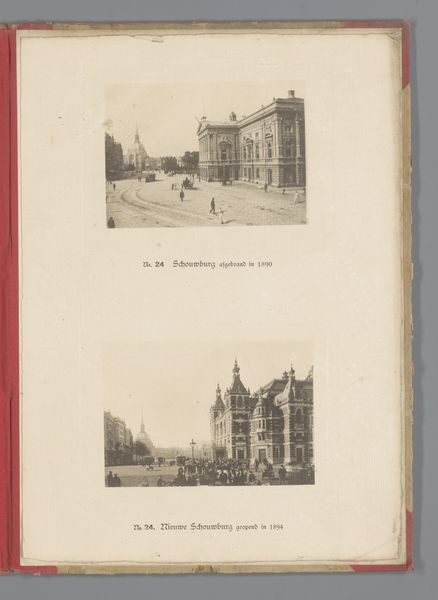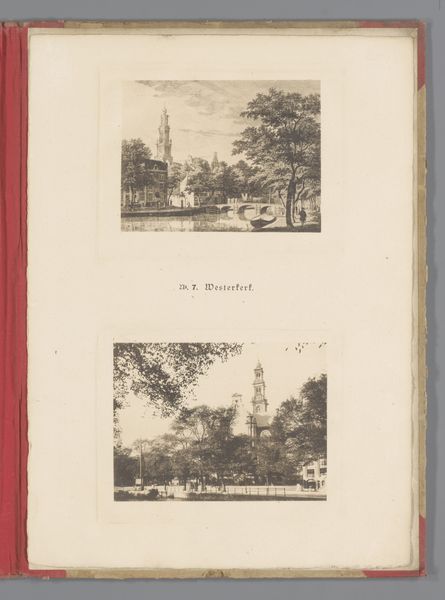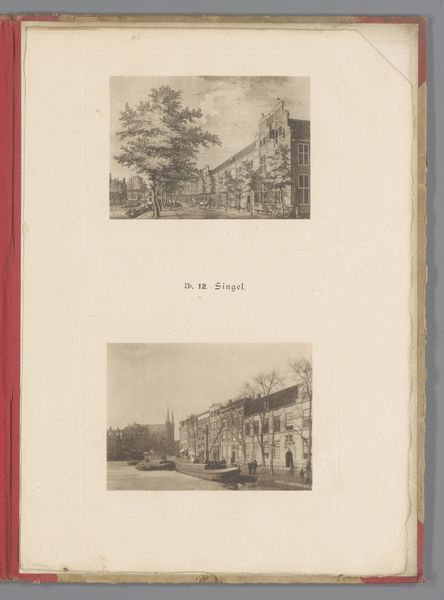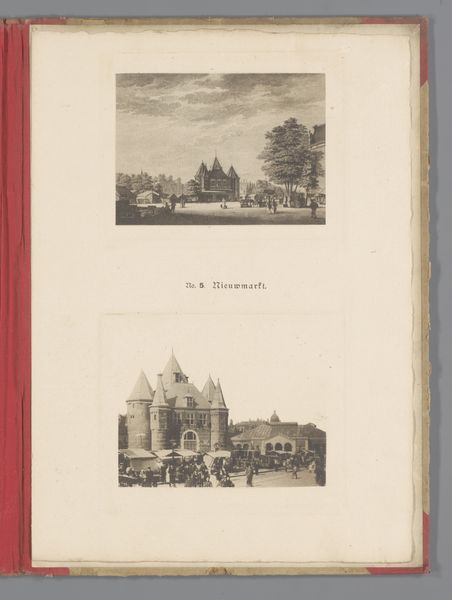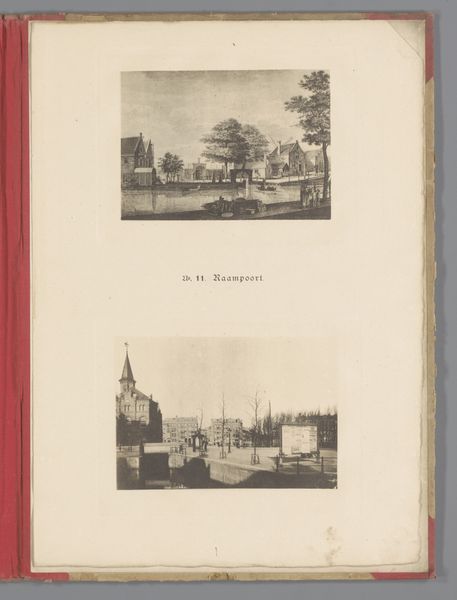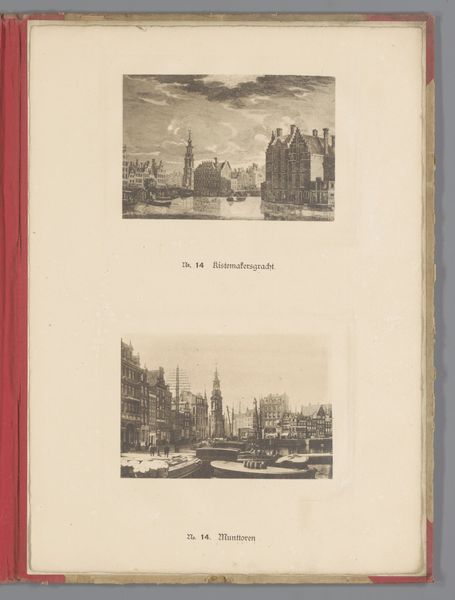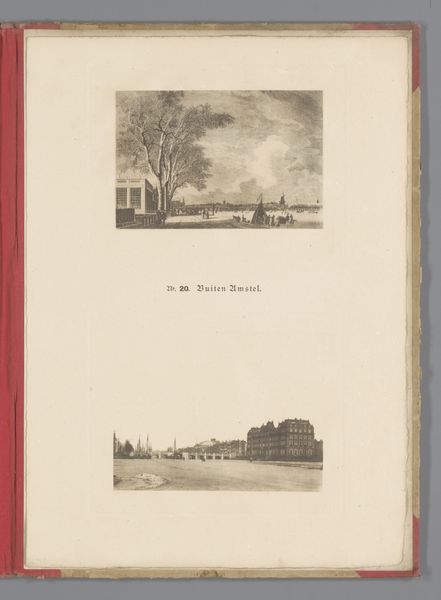
Twee gezichten op de Amstel te Amsterdam, waarvan één reproductie van een prent door Simon Fokke naar Jan de Beijer 1890 - 1900
0:00
0:00
anonymous
Rijksmuseum
print, etching, paper, engraving
#
dutch-golden-age
# print
#
etching
#
landscape
#
paper
#
cityscape
#
engraving
Dimensions: height 348 mm, width 250 mm, height 99 mm, width 138 mm, height 95 mm, width 140 mm
Copyright: Rijks Museum: Open Domain
Editor: This piece, "Twee gezichten op de Amstel te Amsterdam," presents two views of the Amstel River. They are etchings on paper from around 1890 to 1900 and after Jan de Beijer by an anonymous artist. The cityscapes seem very different, despite depicting the same location. One is bustling and alive, and the other feels calm and muted. How would you interpret the significance of showing these contrasting viewpoints together? Curator: It's fascinating to consider these views in the context of Amsterdam's evolving self-image. Remember, the late 19th century saw rapid urbanization and industrial change. Perhaps juxtaposing a vibrant, historical Amstel with a quieter, more modern view comments on that shift. What social functions do you imagine the Amstel served in each period depicted, and how do the artistic choices—the detail, the light—emphasize these functions? Editor: So, beyond simply documenting the landscape, these etchings participate in a dialogue about Amsterdam's progress, or perhaps, loss? I wonder if the contrast highlights a nostalgic yearning for a bygone era? Curator: Precisely! Consider the power dynamics inherent in cityscapes. Who is typically represented in these images? Who benefits from the portrayal of Amsterdam as either a bustling center of commerce or a serene, modern city? It invites us to think about who controlled the narrative and how these prints might have shaped public opinion. Editor: That’s a perspective I hadn’t considered – how art can actively influence social perceptions. The prints aren’t just neutral records, but deliberate constructions. Curator: Absolutely. And by placing these contrasting images together, this presentation fosters an ongoing conversation about the city’s identity and the implications of its transformation. I appreciate you noticing the contrast of a time moving forward. Editor: I'll definitely look at cityscapes with new eyes now! Thanks!
Comments
No comments
Be the first to comment and join the conversation on the ultimate creative platform.

